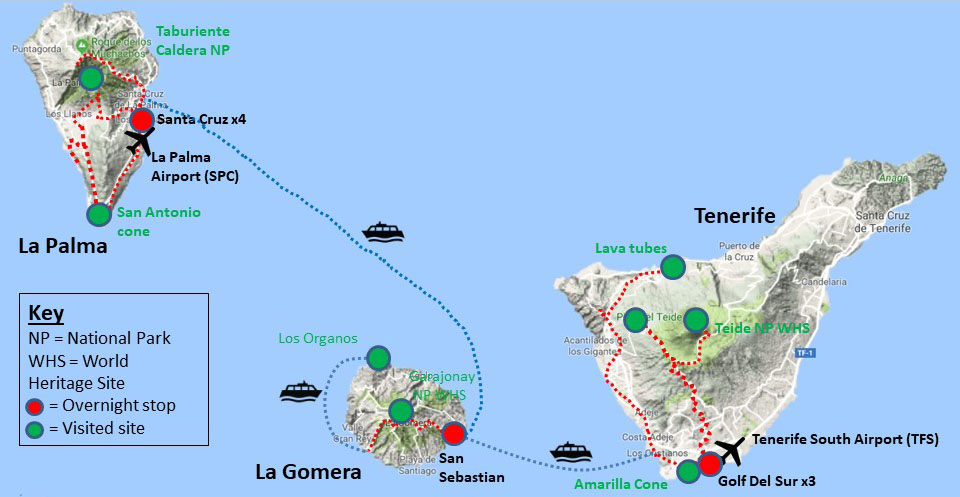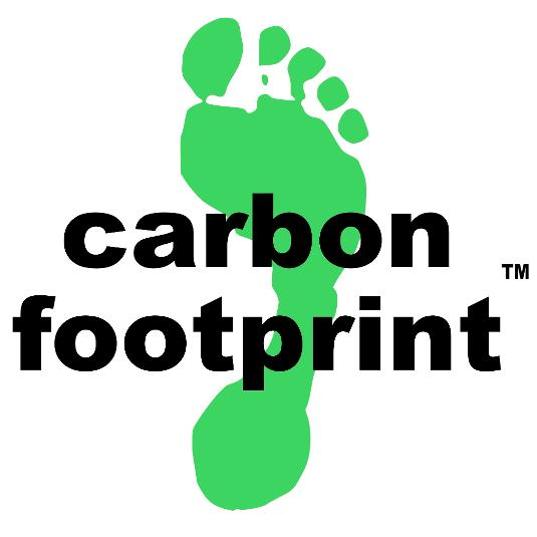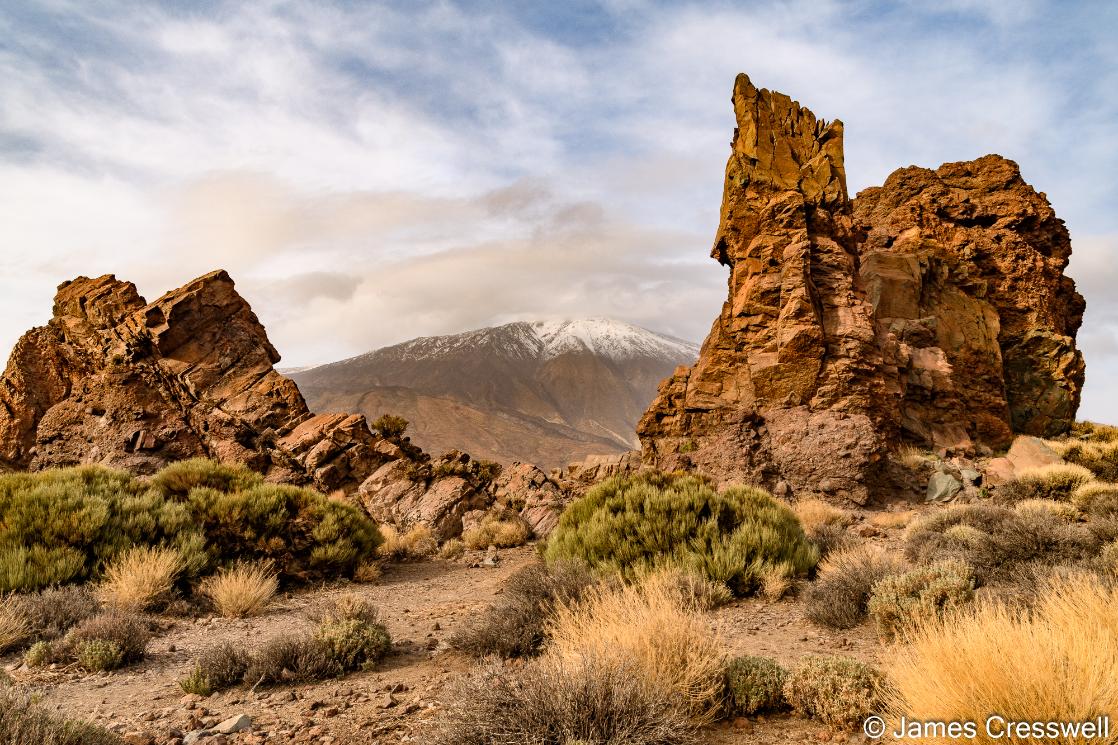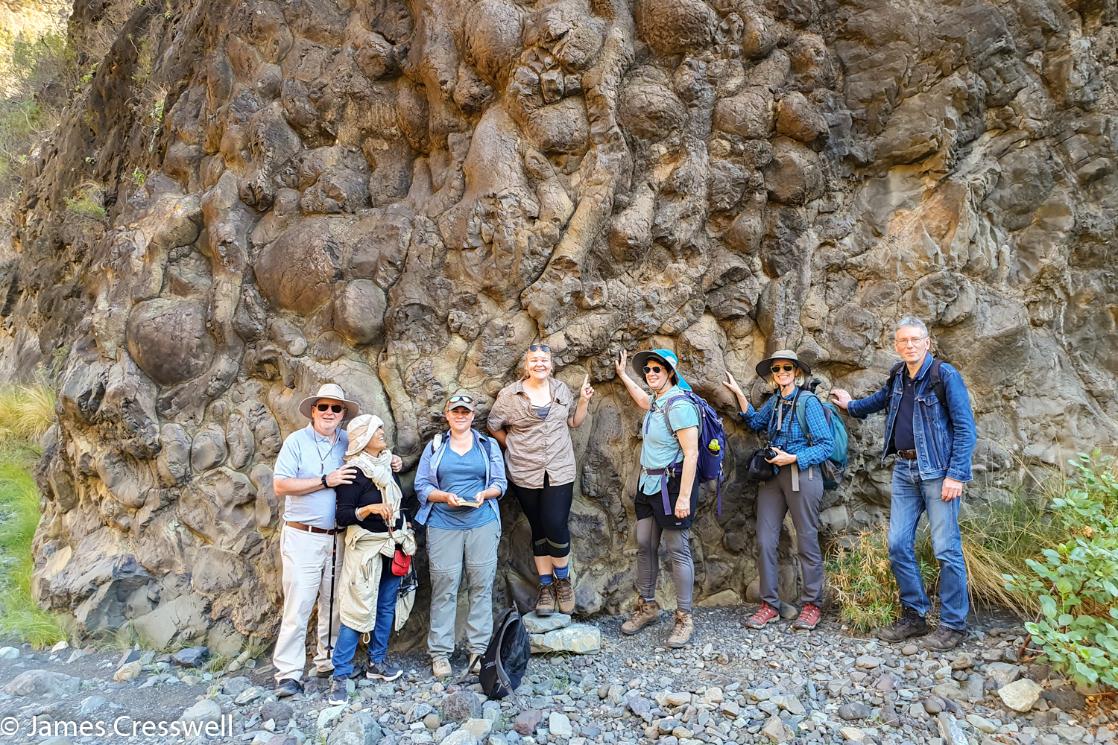Canary Islands
Volcanic Island Hopping
Tenerife to Tenerife
Exclusive small group tour. Number of participants : 4-14
8 - 16 December 2025 *11 spaces*
9 Days/8 Nights
£2,050
* * * * * * *
Prices are per person, based on 2 people sharing a room, bed & breakfast accommodation. Single supplement applies, please make contact for details.
Rising 5-7 km from the floor of the Atlantic and related to a mantle hotspot, the Canary Islands are the largest volcanoes in Europe. These islands are popular with tourists but few venture into the interior of the islands to explore this volcanic wonder land. The rocks reveal all the stages in the growth of ocean island volcanoes, and the islands show the scars of some of the largest landslides ever to have occurred on Earth. This tour takes in the three islands of Tenerife, La Gomera and La Palma.
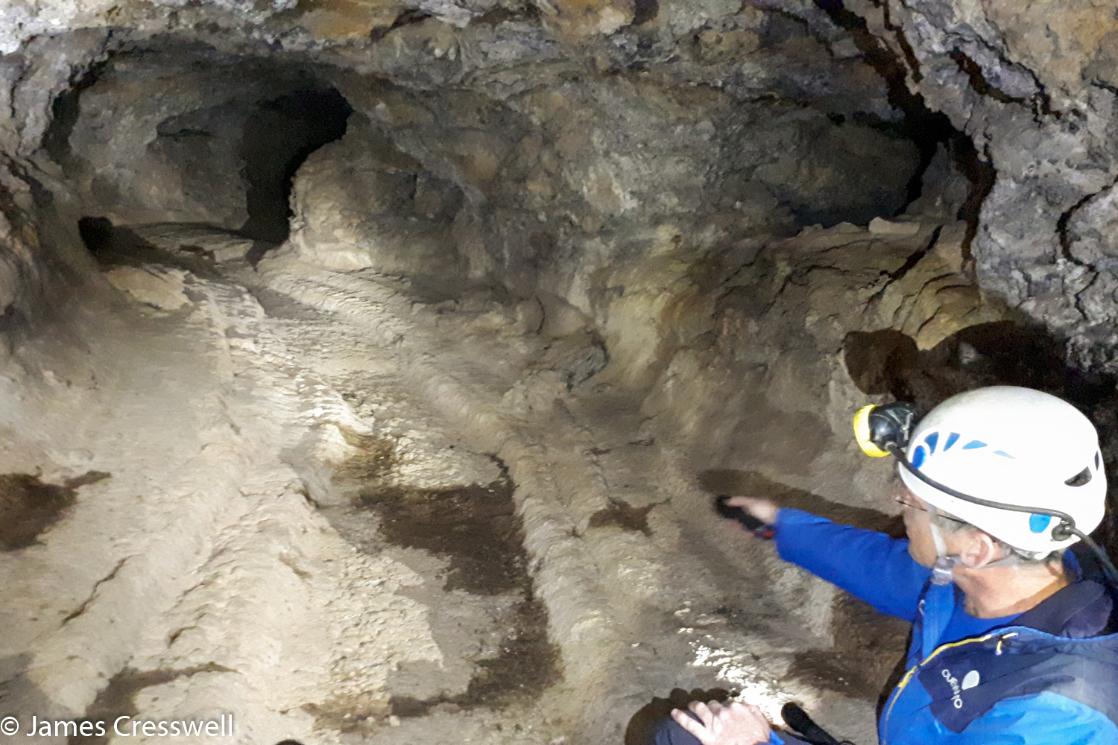
Inside the Cueva del Viento lava tube, Tenerife (Day 2)
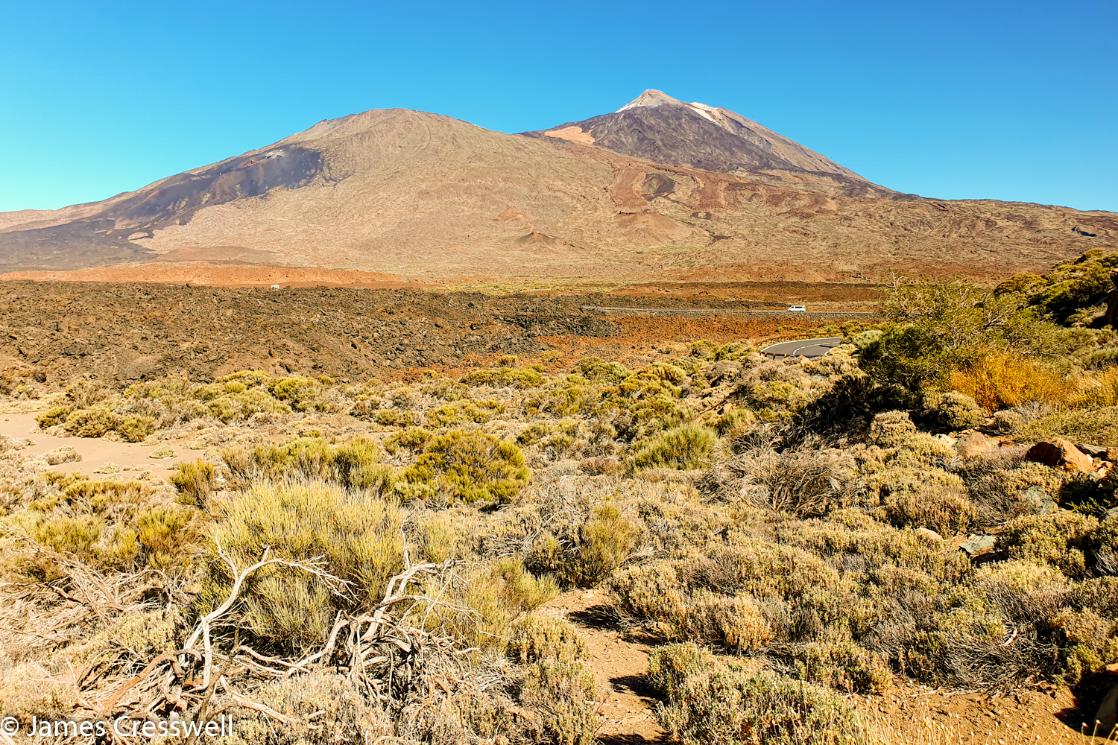
Inside Las Canadas Caldera, in the Teide World Heritage Site. The peak of Teide is in the background with Pico Viejo in the foreground (Day 3)
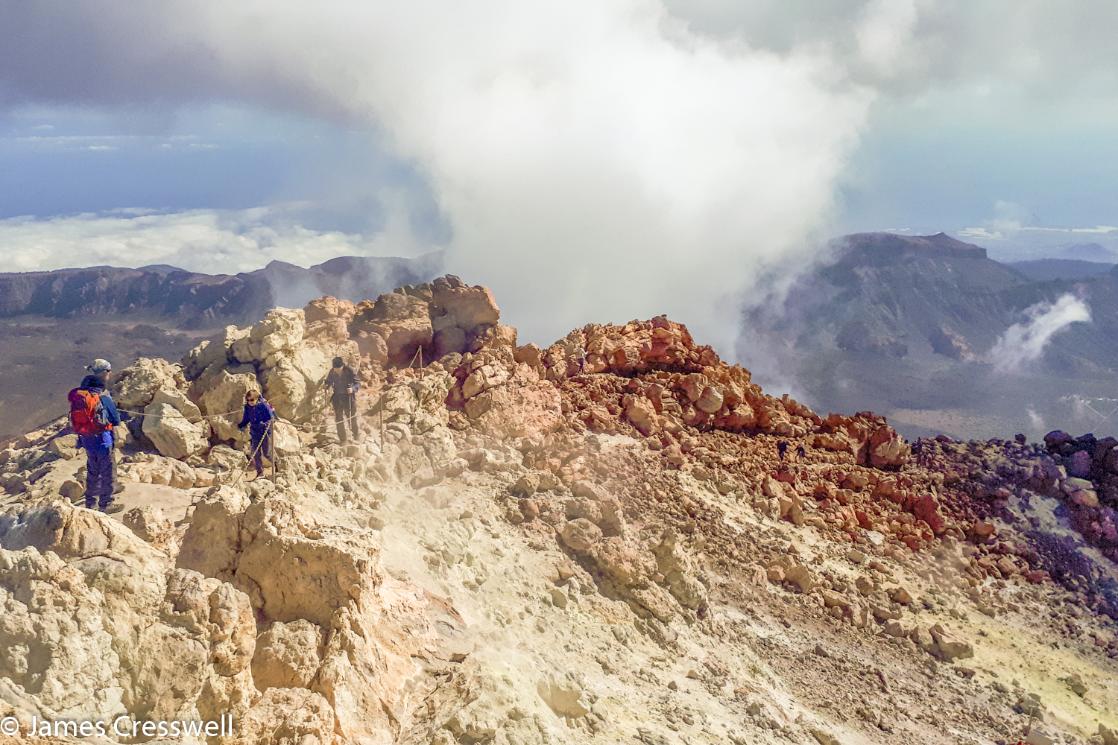
On the summit of Teide, 3718m above sea level, Tenerife (Day3)
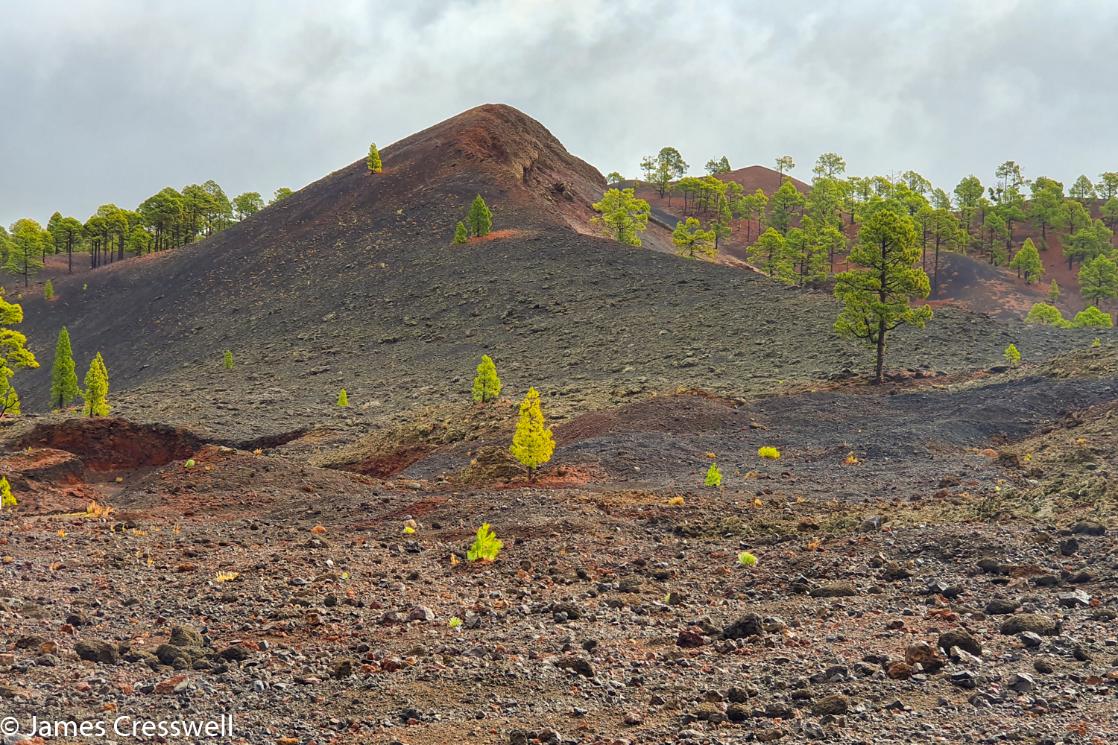
Boca Cangrejo cone which was spotted erupting by Christopher Columbus in 1492, Tenerife (Day 3)
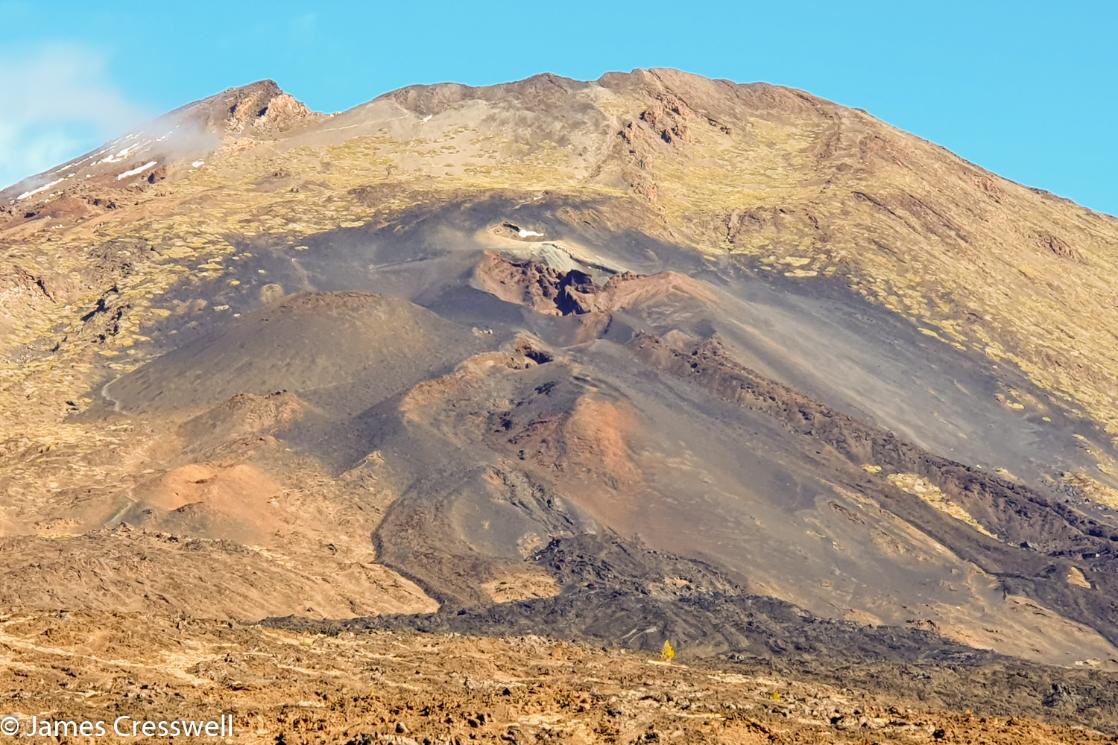
Pico Viejo which is a parasitic cone of the main Teide volcano, the fissure in view here formed in 1798 Chahorra eruption, Tenerife (Day 3)
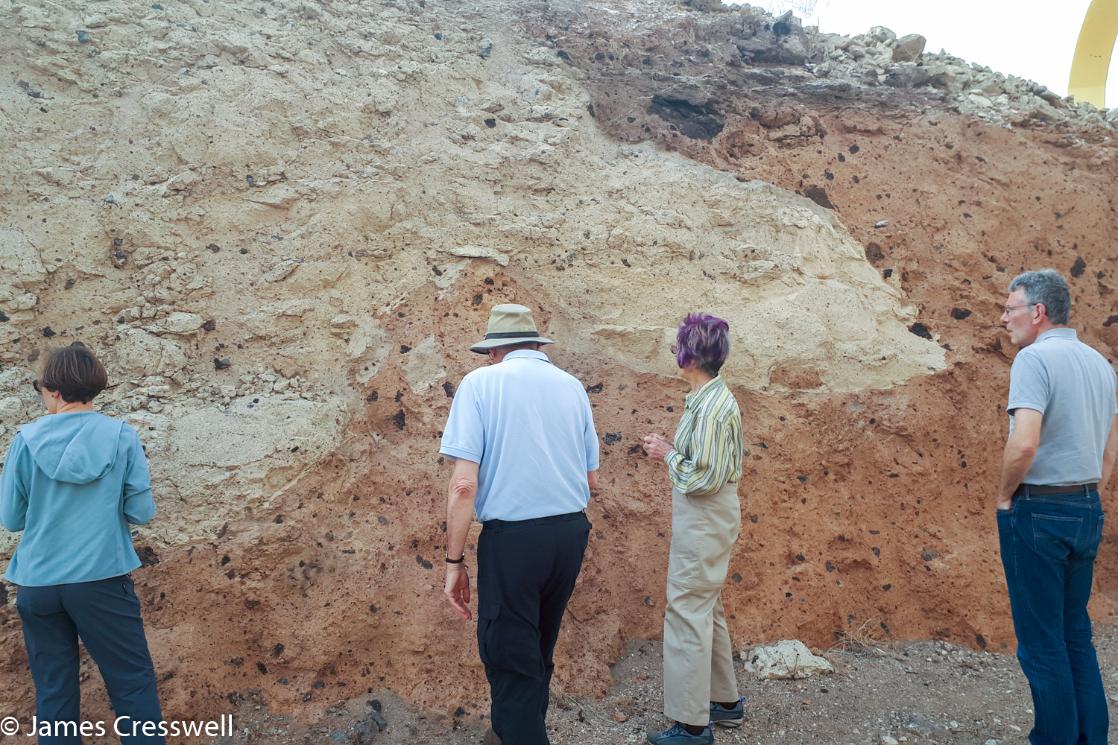
Examining pyroclastic flow deposit from Plinian eruptions in Tenerife's past (Day 4)
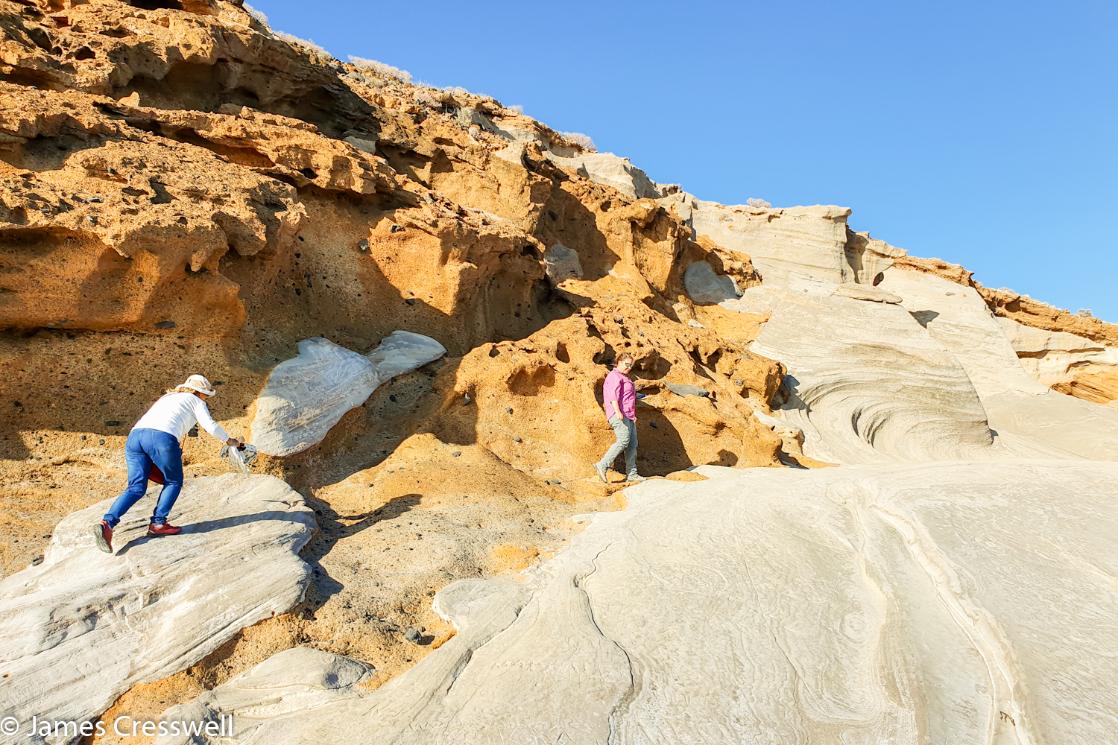
Fossilized sand dunes (pale) onto of bright yellow palagonite tuff of the Amarilla cone, Tenerife (Day 4)
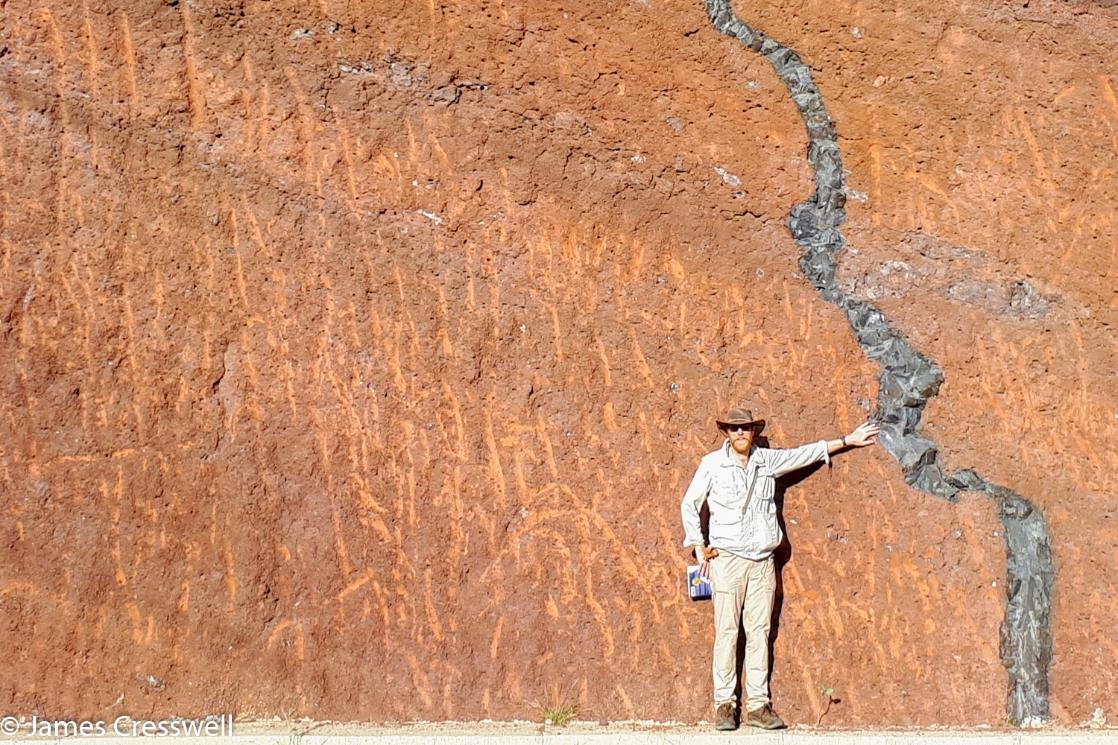
James and a dyke cutting through compacted backed scoria on La Gomera (Day 4)
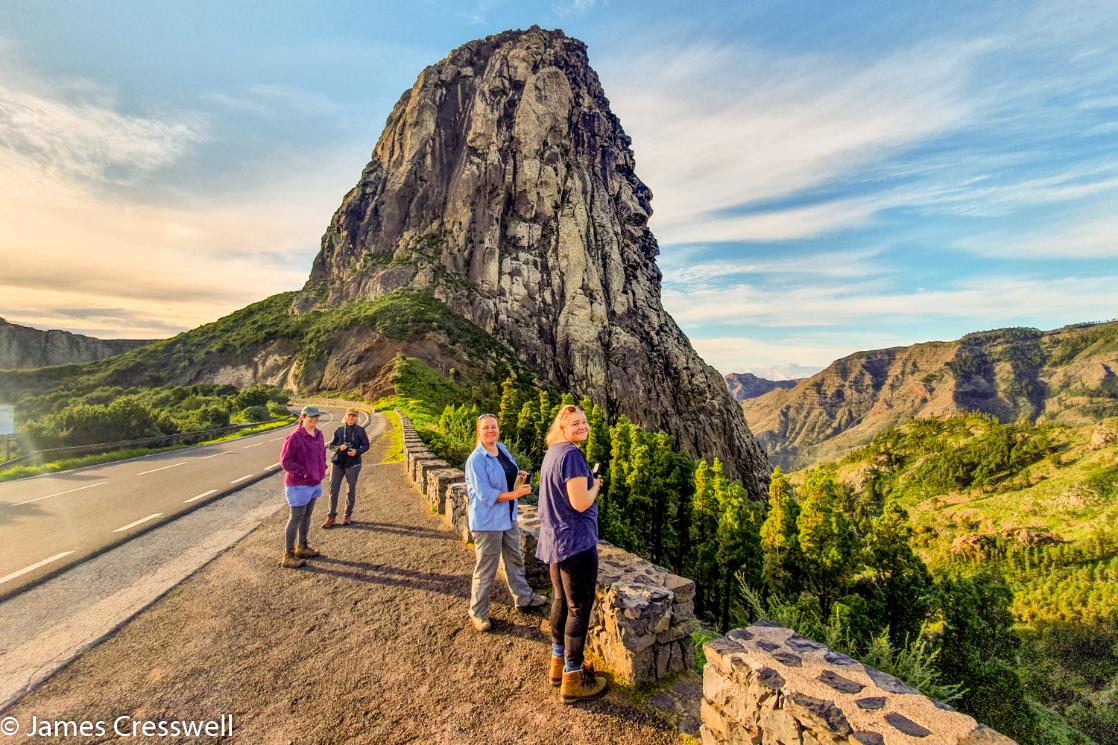
Rocque de Agando a 5.1 million year old trachyte dome,in the Garajonay National Park World Heritage Site, La Gomera (Day 5)
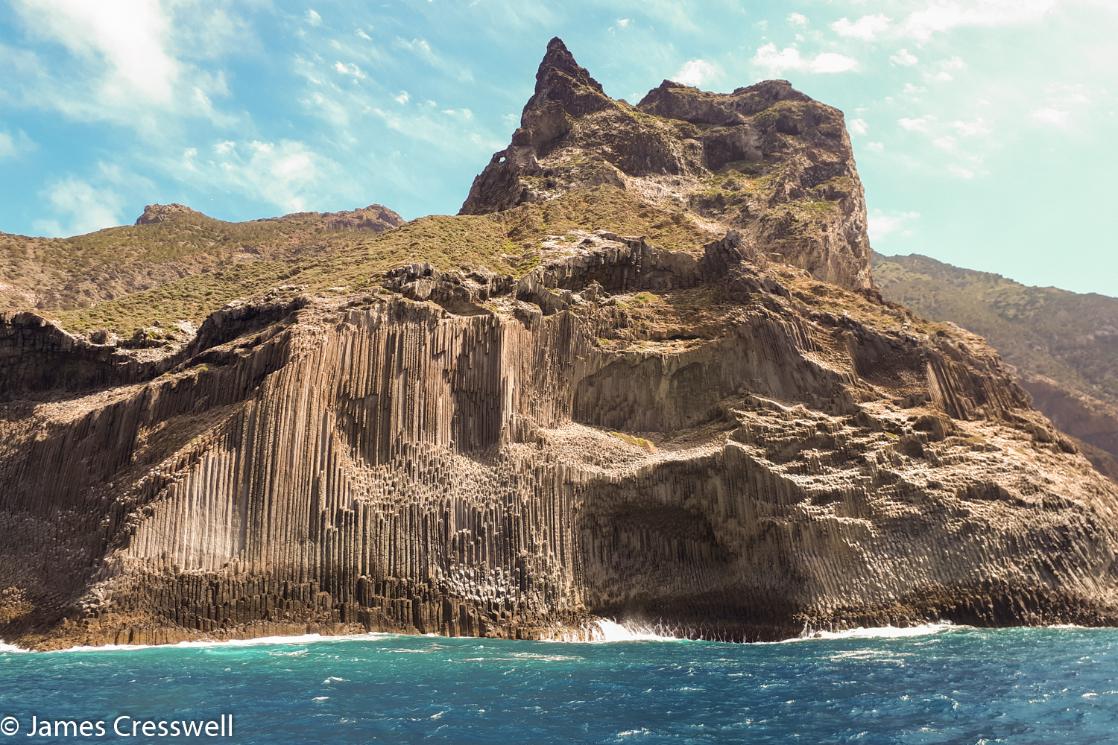
Los Organos columnar jointing, La Gomera (Day 5)
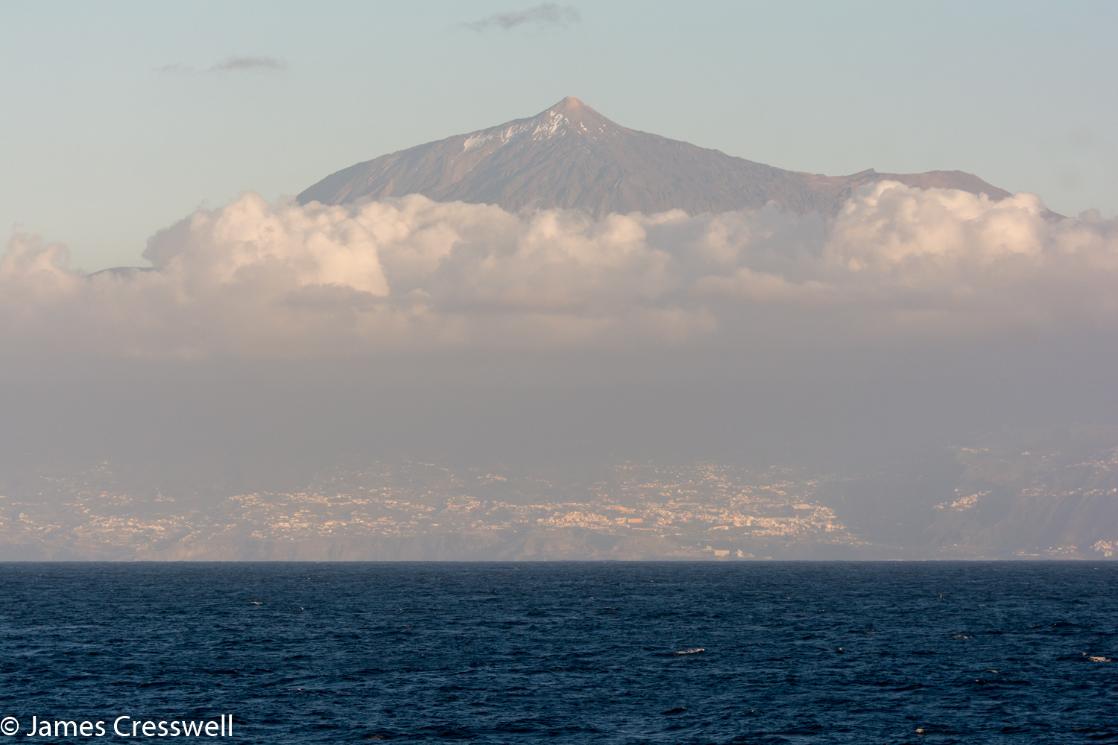
Teide seen from the ferry en-route to La Palma (Day 5)
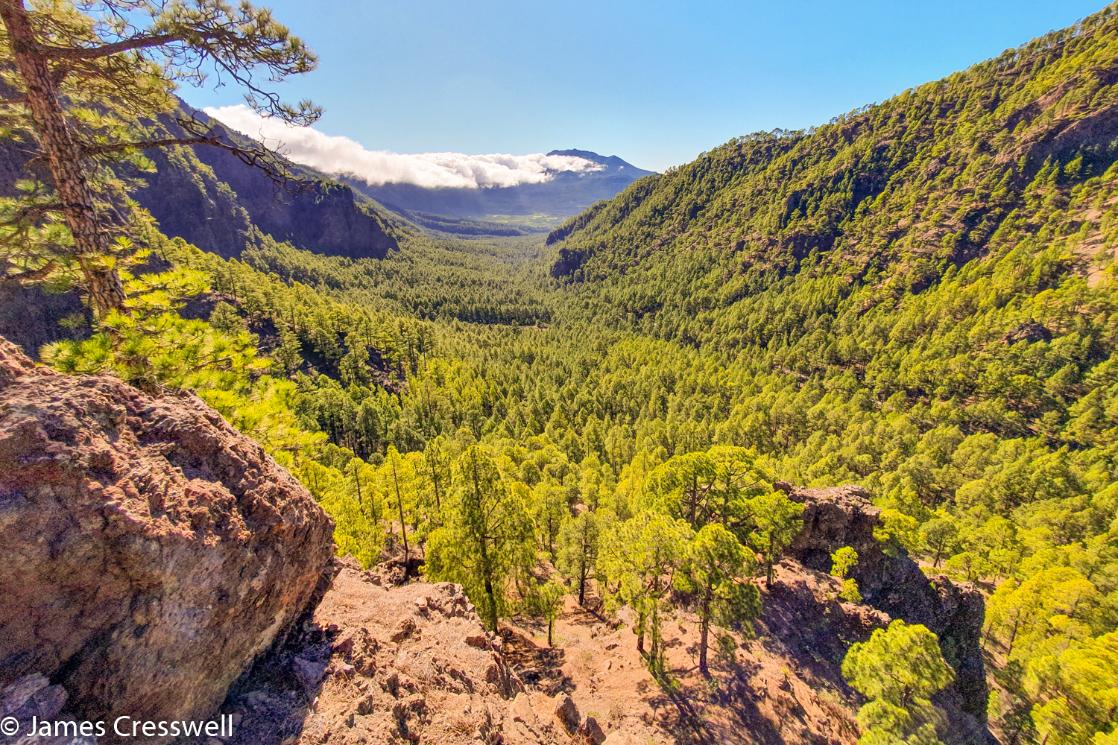
Mirador de La Cumbrecita, La Palma (Day 6)
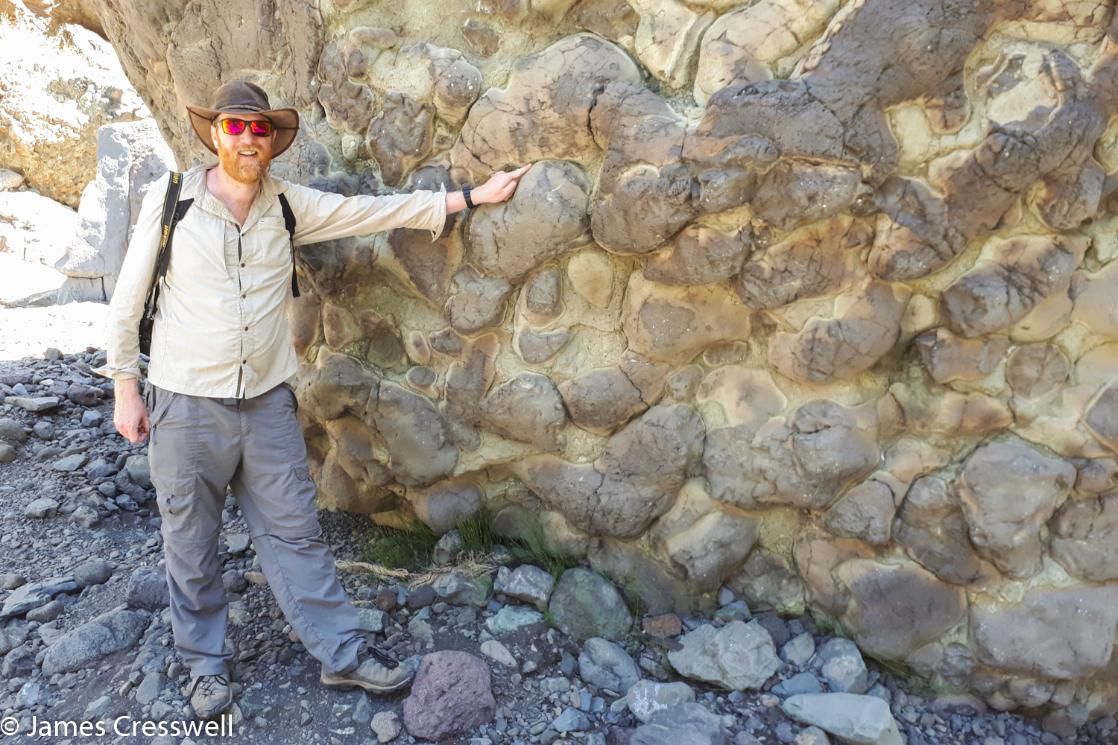
James Cresswell in Barranco de las Angustias points to pillow basalts that formed when they erupted on the summit of a seamount. The seamount eventually broke the surface and erupted subaerially to become La palma island (Day 6)
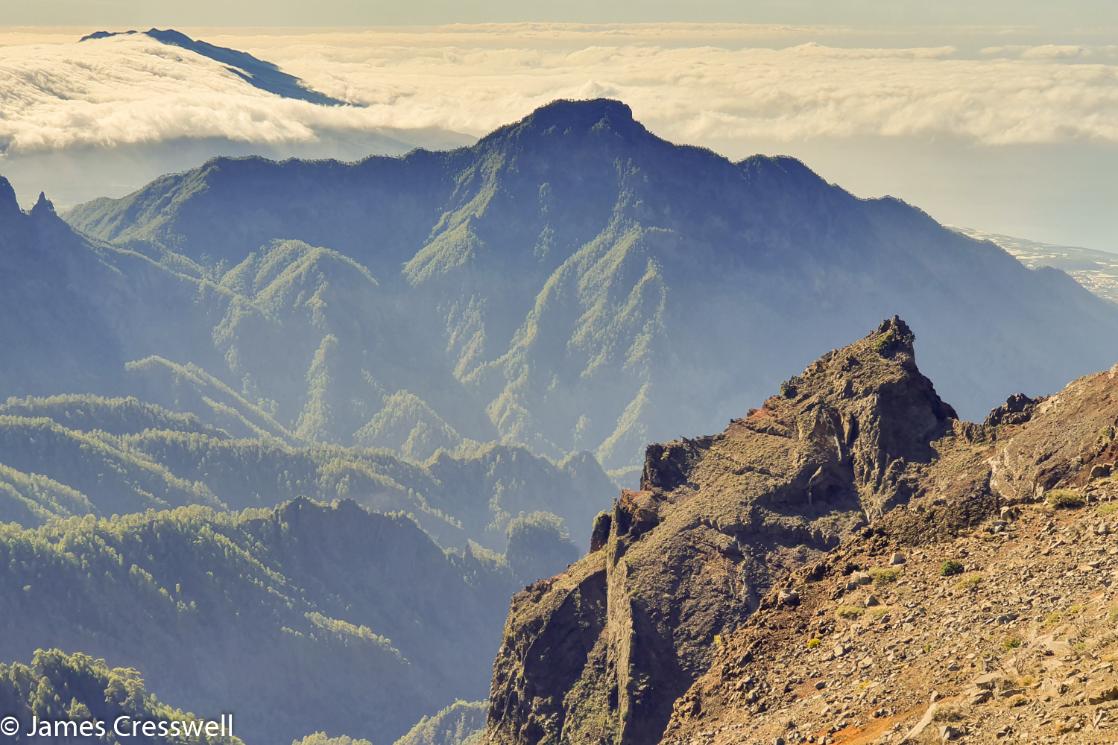
Benjando volcano, La Palma (Day 7)
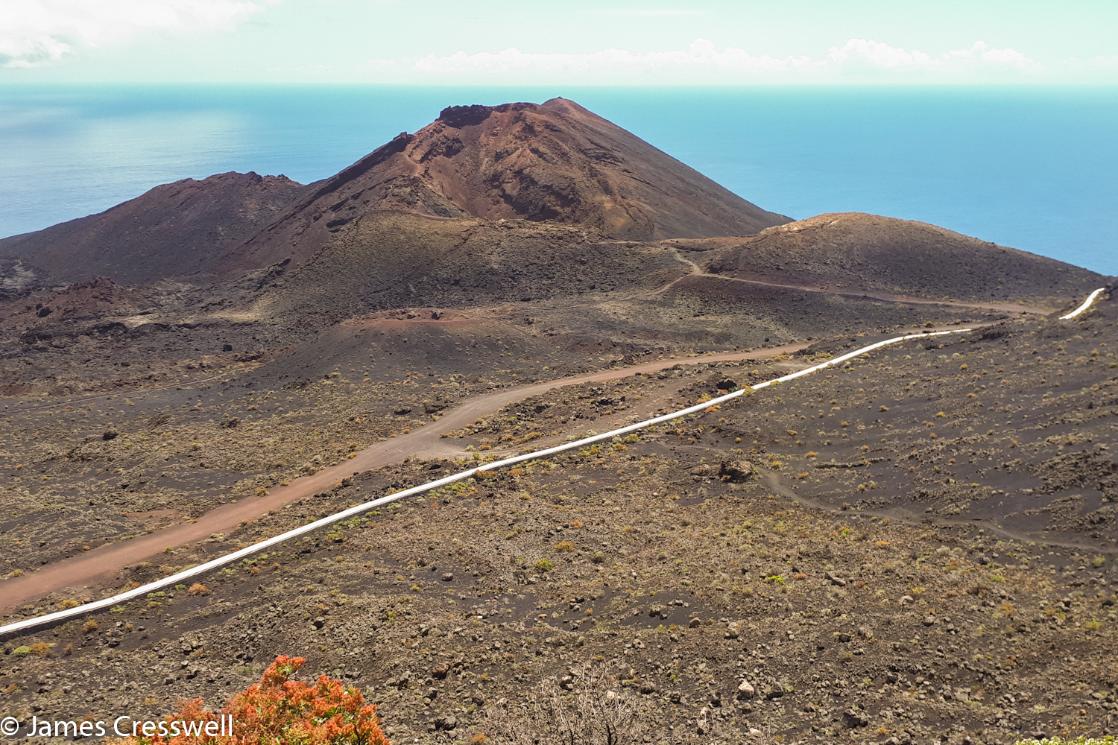
Teneguia cone which erupted in 1971, La Palma (Day 8)
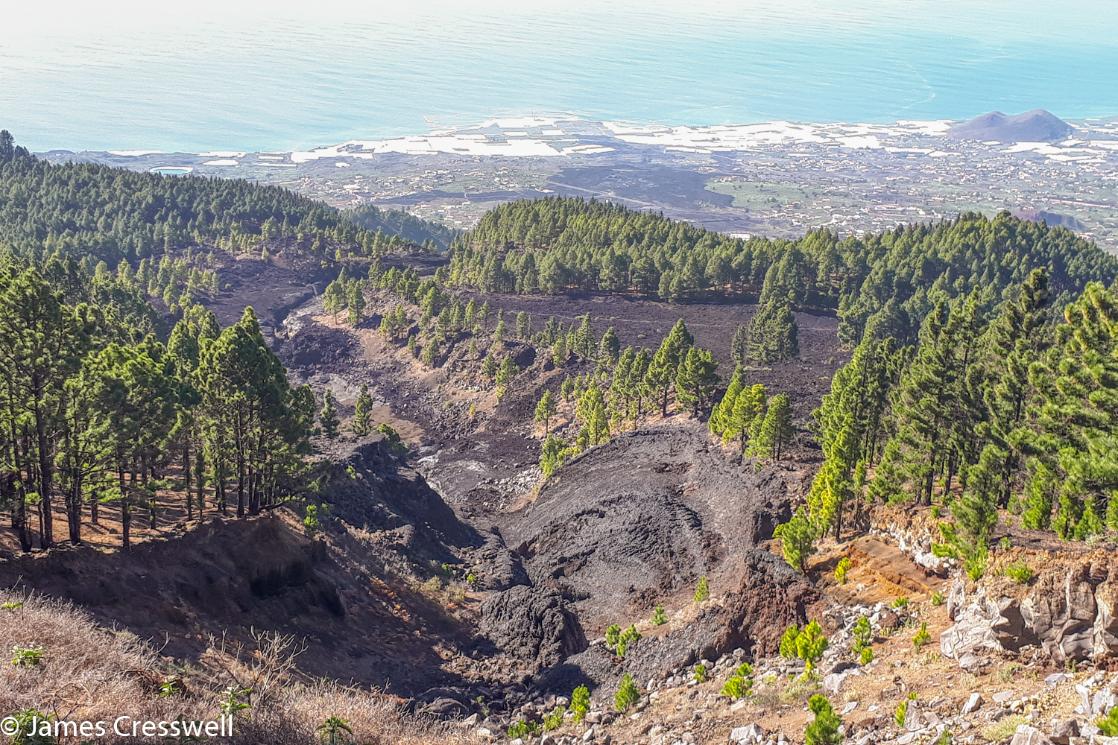
Llano del Banco eruptive fissure, which emitted lava flows that formed coastal lava deltas in 1949 (Day 8)
Itinerary
Day 1 - Arrive on the island of Tenerife. (Tenerife has two airports: our hotel is located a short distance from Tenerife South Airport - TFS). Our hotel, where we will be staying for the first three nights, is a 10-minute taxi ride from Tenerife South Airport (TFS), and around a 1-hour taxi ride from Tenerife North Airport (TFN). There are many direct flights to Tenerife South from Europe, including with budget airlines.
Day 2 - The creation of Tenerife and the Ceuva del Viento lava tube. Our first stop is in the town of Adeje, here we get views of the oldest rocks in Tenerife which were formed by a Miocene volcano. We then move on to a view of spectacular 600m high cliffs known as Los Gigantes, which are made from lavas of the slightly younger Miocene volcano, Teno, which formed on the flanks of Tenerife’s original central volcano. From here we travel to the Mirador de Cherfe, where there are magnificent views into the interior of the eroded Teno volcano. We then reach the town of Garachico which was destroyed by a volcanic eruption in 1706. We first take in an overview of the lava flows from the 'Monument of the Canary Emigrant' which used to be the main departure point for people emigrating to the Americas, before visiting the harbour for a closer inspection of the lava. We then have our lunch in the neighbouring town of Icod de los Vinos where we can see the famous Dragon Tree before taking a 2-hour tour inside Cueva del Viento lava tube. This lava tube is the longest in the world outside of Hawaii and is rich in fossils of the 'Canarian megafauna'. We return to our Tenerife hotel for a second night.
Day 3 - Teide National Park World Heritage Site , Tenerife. We spend today in the magnificent Teide National Park which is also a World Heritage Site on account of Teide’s sheer majesty - a 3,718m high peak rising from a collapsed caldera – and the fact that the volcano has produced some very rare, evolved types of lava. Our first stop is to look at some phonolite lava balls. These ‘balls’ formed rather like snowballs accumulating material as they rolled down a lava flow. Our next stop just inside the wall of the Las Canadas caldera is to look at some radial dykes and cone sheets. We then head west along the caldera floor to reach the Mirador de Chahorra, here we get excellent views of Pico Viejo which is a parasitic cone of the main Teide volcano, and see where lava erupted from it in the 1798 Chahorra eruption. We then head west along the island's north-west rift zone, firstly to examine lava from Mna Reventada before then stopping at the Boca Cangrejo cone which was spotted erupting by Christopher Columbus in 1492. Next, we take a walk to Chinyero cone to see the site of Tenerife's most recent eruption which occurred in 1909. We then return to the caldera stopping at Los Azulejos to see colourful hydrothermal formations before moving on to the Mirador Roques de Garcia, and get great views of rock outcrops which may have formed the headwalls of previous calderas. We then reach the base of Teide volcano itself. This impressive volcano is of global geological importance. Here we ride the cable-car to an altitude of 3500m, just 200m below the summit. We will then take an optional hike to the summit. This hike requires a permit which must be obtained 3 months in advance so please inform me if you want to join the hike at the time of booking. Those who do not wish to climb can enjoy the views at the cable car station. After returning from the cable car we visit a site where pumice used to be quarried and also see obsidian before visiting the National Park Visitor Centre at El Portillo. We then return to our Tenerife hotel for a third night.
Day 4 - Tenerife and La Gomera. Our first stop today is the Amarilla scoria cone. Here we see a volcanic cone that initially began erupting in shallow water but completed its eruption sub-aerially with Strombolian activity. The cone is a striking yellow colour due to the ‘palagonisation’ (hydration) of the volcanic ash that was erupted into the sea water. On the margins of the cone there are also spectacular fossilised beach dunes. Our next stop is to learn about the violent Plinian eruptions that occurred on Tenerife between 2 million and 200,000 years ago. Several cycles of very violent caldera-forming eruptions have occurred, producing pyroclastic flows. The deposits they created, known as ignimbrites, can be examined here. Then on the edge of Los Cristianos we will stop at the Caldera de Rey crater, which was formed by felsic lava exploding with water (phreatomagmatic eruption). This violent eruption produced pumice fallout and pyroclastic flows. We then take an early afternoon ferry over to the island of La Gomera. Here we will visit an enormous 5m wide dyke and a former quarry where baked red scoria has been mined as a building stone, before spending the night at a beautiful hotel which is built from the same red scoria.
Day 5 - Garajonay National Park World Heritage Site and Los Organos, La Gomera. We spend our morning driving through Garajonay National Park, World Heritage Site. The park is so designated due to its unique vegetation with relic forests that are remnants of what would once have covered much of Europe and North Africa. The National Park is also full of many volcanic dykes and plugs. Our first stop is the Roque de Agando a 5.1 ma trachyte plug. We then continue to Mirador de los Roques where we can look back at great views of the Roque de Agando. Our next stop is the Mirador de Igualero where we get great views of a mushroomed-shaped intrusion called La Fortaleza, which is a trachyte intrusion with a flat top. We then arrive in the harbour village of Valle Gran Rey for a boat trip to the spectacular cooling columns of Los Organos, which resemble Scotland's Fingal's Cave and Northern Ireland's Giant's Causeway. These columns are the interior of an eroded trachyte dome. We travel 12 nautical miles each way and have views of imposing valleys and bays. There is also a good chance of seeing whales and dolphins en route. (NB: this trip is weather dependent). After our boat trip we visit a National Park visitor centre to see some of the trees that are so unique to this World Heritage Site. We then take an evening ferry to La Palma where we will spend the next three nights.
Day 6 - Caldera de Taburiente National Park, La Palma. Our first stop is the National Park Visitor Centre for an initial overview of the Caldera de Taburiente. This caldera is famous for being the place where the term 'caldera' was first coined, and it was formed by a giant landslip followed by fluvia erosion. Our next stop is the Mirador de La Cumbrecita where the Bejando volcano can be seen forming the eastern wall of the caldera. Here we leave our vehicle and take a 800m walk (in each direction) along the caldera collapse wall for impressive views into the caldera. We then visit the town of Los Llanos to get some lunch before going to Barranco de las Angustias. The barranco or gorge is the entrance to the Taburiente caldera. We will take a gentle walk into the base of the caldera and will get the extraordinary opportunity to observe the deep structure of the submerged stage of development of the island, a seamount. We will see pillow basalts, dykes and low level metamorphism along the side of a beautiful stream that is eroding out the gorge. After an hour and a half of walking we will turn around and retrace our steps back to the vehicle. We spend a second night in the same hotel near Santa Cruz de La Palma.
Day 7 - Rocque de los Muchachos and La Caldereta, La Palma. Today we drive to the highest point on the island, Rocque de los Muchachos, on the summit rim of the Caldera de Taburiente. On the way we stop to observe reddish scoria beds that are rich in the mineral hematite and resemble Martian rocks. Eventually we arrive at the summit of the caldera rim, where the views are amazing. On a good day Teide on Tenerife is visible, as is the island of El Hierro. Here we walk for about an hour enjoying the spectacular views into the caldera itself. We then return to Santa Cruz de La Palma visiting La Caldereta which is one of the largest tuff (volcanic ash) cones in the Canary Islands. We then have some free time in Santa Cruz de La Palma before heading back to our hotel.
Day 8 - San Antonio and Teneguia cones, La Palma. Today we visit the south of the island and the most recently volcanically active areas. Our first stop is to examine lavas that erupted in the Martin eruption of 1646 AD. This is followed by he Volcan San Antonio Visitor Centre. Here we can see original video footage of the 1971 Teneguia eruption. We then take a walk along the rim of the San Antonio crater, looking inside, as we go. On the far end of the crater we look down onto the Teneguia cone which erupted in 1971, and is Tenerife's most recent eruption (except for one submarine one). We then drive down to the southern tip of La Palma to observe lavas emitted in the Teneguia eruption and the Fuencaliente lighthouse. Our route then takes us up the western coast of La Palma and we stop to observe the lava from several recent eruption that have erupted from the ridge of the Cumbre Vieja volcano which forms the southern half of La Palma island. Eventually we reach Puerto Naos and can see where lava from an eruption in 1949 spilled over the sea cliffs to make new land in the form of lava deltas. These lavas deltas have had soil added to them and now host banana plantations. We then descend onto the lava delta to see a lava flow that displays levees on either side. Our final stop situated in the interior of the island, high up on the Cumbre Vieja volcano, is the Llano del Banco eruptive fissure. It is from this fissure that the 1949 lavas were emitted. We then take a late afternoon ferry back to Tenerife.
Day 9 - Departure. The tour ends this morning. Our hotel is a taxi ride from Tenerife South Airport (TFS) where you can take a flight home, or to another one of the Canary Islands.
INCLUDED
Geological guiding from James Cresswell
Transportation from destination to destination
Hotel accommodation, normally 3-4 Star with en-suite bathrooms
Breakfast in the hotels
Boat trip to Los Organos
Lava tube tour in Ceuva del Viento
Cable car up Teide
Hiking permit for Teide summit (please request at time of booking)
Ferry crossings
NOT INCLUDED
Flights
Lunches and dinners
Transportation to and from airport at start and finish of tour
CARBON GENERATED BY THIS TOUR
We purchase carbon offsets through Carbon Footprint.
= 0.353 TONNES OF C02
(calculated at https://www.carbonfootprint.com/calculator.aspx)
At no additional cost to you, GeoWorld Travel will offset the Carbon created by this tour using carbon offsetting company Carbon Footprint. A certificate for this offset will be supplied to you after the tour is completed.
It is your responsibility to book your travel to and from the start and finish of the tour, so if you would like to also carbon offset this cost please use our carbon offset calculator here.
Trip diaries, photo galleries and reviews of previous trips
Trip Diary 2024
A day-by-day account of the trip with captioned photos
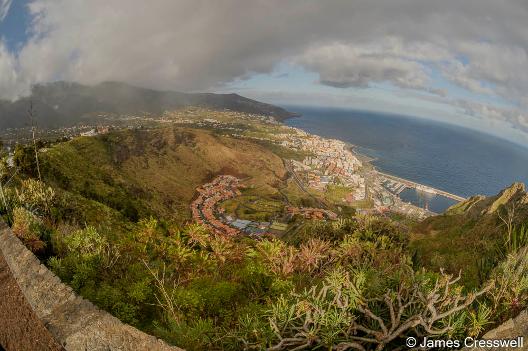
PHOTO DIARY 2023
The 40 best photos from our 2023 trip, with captions
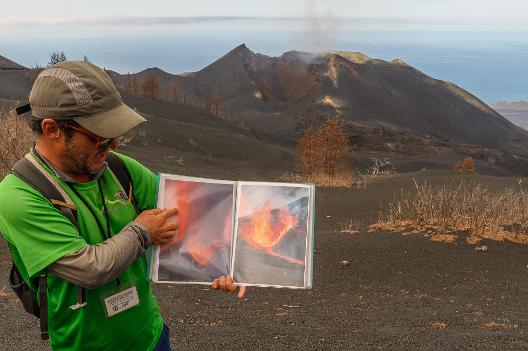
Trip Diary 2022
A day by day account of the trip with captioned photos
Trip Diary 2019
A day by day account of the trip with captioned photos
This current trip is slightly modified from this version of the itinerary
THE CANARY ISLANDS - VOLCANIC ISLAND HOPPING (2024)
"A real treasure; the type of vacation you’ll remember for years to come. Besides the breathtaking views, which you expect on volcanic islands, the trip was a scientific journey into the past. The tour was led by James Cresswell and he and his wife Abby have designed the tour to see all aspects of volcanic activity from the summits to ground level - from ancient volcanoes to the 2021 eruption - Dikes, lava flows, ash, rocks from shield and strato eruptions. The group consisted of fellow scientists and we were all on a first name basis the first day. Practical highlights were (1) 50 page handout James gave out describing what we would see each day, (2) the minibus where we could bring extra clothing and lunch and leave them on the bus during our outings, (3) the modern hotels, unusual in a rural setting, (4) organized plan Bs for unexpected closures and interruptions, (5) many hikes (optional) so we didn’t have to sit on a bus all day. I would definitely recommend this tour to physically active people with an interest in earth science."
Ellen B., California, USA
Review was posted on Google, March 2024
THE CANARY ISLANDS - VOLCANIC ISLAND HOPPING (2023)
"Joined Geoworld Travel on the trip to the Canary Islands. It was a small group of 12 including two leaders which worked very well. It was a full itinerary with a good length of time at each site. Good hotels and a great trip for an amateur geologist or somebody with interest but little knowledge."
David B., Chichester, UK
Review was posted on Google, April 2023
THE CANARY ISLANDS - VOLCANIC ISLAND HOPPING (2023)
"Our first trip with GeoWorld Travel but it certainly won't be our last. The organisation was very good, before and during the trip. I'm not a geologist but it was very accessible and the scenery is spectacular. James was an excellent guide/tour manager and I learnt a great deal from him and also from the discussions between our fellow guests and James (and Martin). The hotels were all comfortable with good food - Hotel Playa Sur's (Tenerife) a la carte restaurant on first and last nights was especially good. Geological highlights included ascending El Teide (reaching the very top was optional!), walking across the volcanic ash of the 2022 eruption on La Palma and the sheer beauty of La Gomera (and a great town square for Mediterranean evening life). This was the side of the Canaries we wanted to see, rather than the big resorts. Travel round the islands was in comfortable vehicles. Thoroughly recommend GeoWorld Travel and James."
Anne B., Chichester, UK
Review was posted on TripAdvisor, March 2023
THE CANARY ISLANDS - VOLCANIC ISLAND HOPPING (2022)
"I really enjoyed the trip to the Canaries. James and Abby planned, organised and delivered everything brilliantly. James' geological guidance was very educational and professional - we visited many sites of geological ( and cultural) interests, listened to James' geological stories, descriptions and explanations, took a lot of pictures with stunning views, had many exciting walks/museum visits/boat and ferry journeys also examined various outcrops and took some rock samples. In the evening, we had took our time to go out and enjoy food in the local restaurant. James is a very responsible, knowledgeable and dedicated to his job. He looked after us very well, paid attention to individual needs, was very supportive and inclusive. He and Abby provided us with a great trip to the Canary Islands. Thank you both James and Abby and thanks to our group for being great mates during our volcanic trip!"
Lyudmyla B., Kent, UK
Review sent to us by email, January 2022
THE CANARY ISLANDS - VOLCANIC ISLAND HOPPING (2022)
"The GeoWorld Travel (GWT) visit to the Canaries is now the 3rd tour I have made with the company. James Cresswell is a very experienced geological guide and the trips are suitable for the complete range from professional to hobby geologists. GWT tours are very good value for money, they are well paced and the itineraries and hotel selection are spot on. James's blogs and pre tour guides are really helpful and accurate. 5 star rating (again)"
Andrew M., Warwickshire, UK
Review sent to us by email, January 2022
THE CANARY ISLANDS - VOLCANIC ISLAND HOPPING (2019)
"Our trip to the Canary Islands with GeoWorld (and James Cresswell as the guide) was excellent. Since we arrived few days earlier, James picked us up (my wife and i) straight from our hotel where we met part of the tour members (7 in total). Prior to boarding the ferry to La Palma, we had the time to go to the Amarilla scoria cone where we walked for an hour and took some amazing pictures. All sites visited during this 9 day guided tour were very good to Excellent; from Amarilla scoria cone, Teide on Tenerife, Los Organos columnar jointing on La Gomera, Roques de Garcia on Tenerife and Viento lava tube and many more. The "Ruta de los Volcanes walk" on La Palma was also excellent and provided us the opportunity to go through different ecosystems as we climbed up in altitude. The hotels that were selected were excellent. We particularly loved "Parador de La Gomera" which is a colonial style hotel in a garden setting perched on top of a hill. James is an excellent and knowledgeable guide/geologist and will make sure you/the group is happy with all aspects of the tour."

